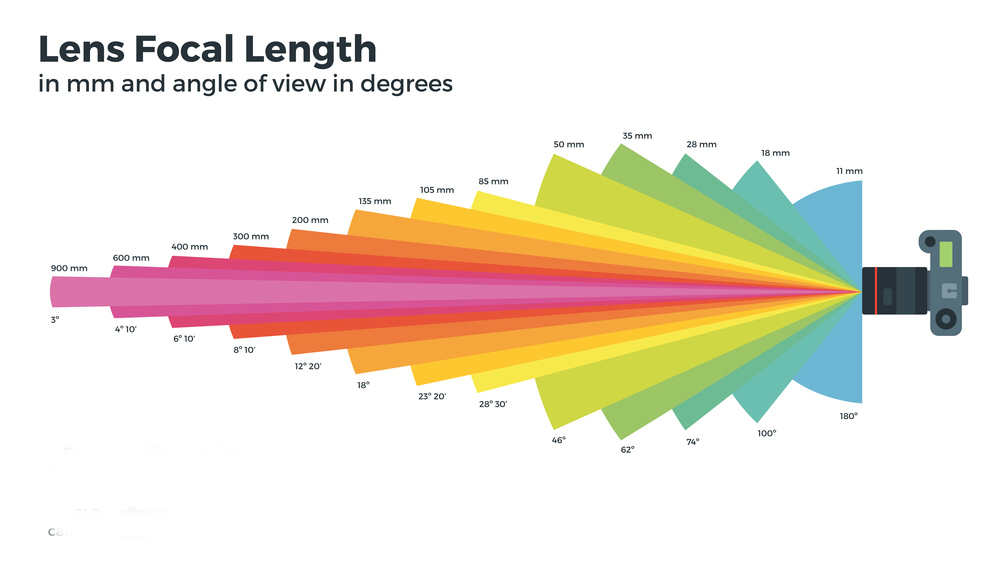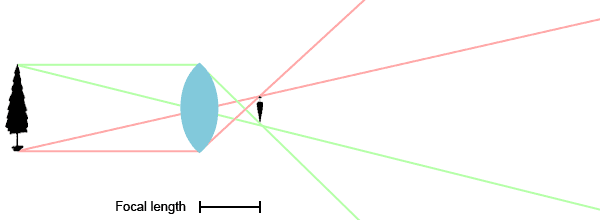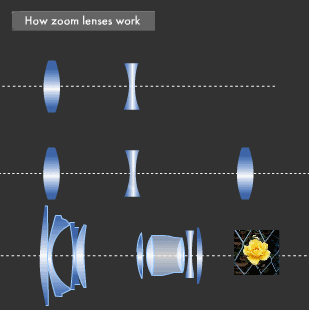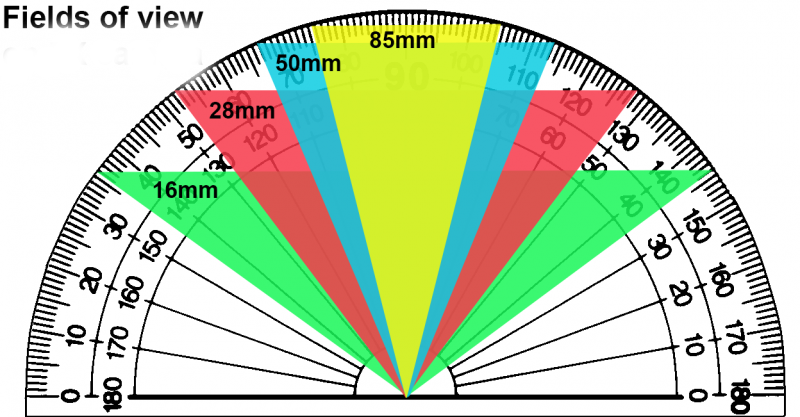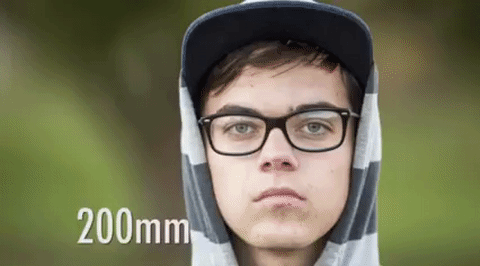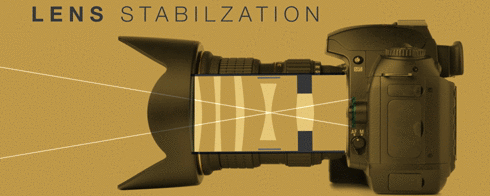NOTE
The images on this site have been taken with a full frame sensor. If you use a camera with a crop factor this will increase the
depth of field of all the lenses used and will also change the focal length of the lens. The
bokeh will therefore change.
Wide-angle LensesUsually range from 14 to 35mm .
Wide angle lenses are ideal for fitting a large area into your frame. This is especially useful for landscape photography or street photography. With wide angle lenses, almost everything is in focus, unless your subject is very close to the lens.
Wide angle lenses are popular lenses for landscape photography, interiors, large group photos and when working in confined situations. They give us a wide field of view.
Focal Length: 14-35mm
Angle of view: Wide
Description: Roughly what a cell phone would capture. Great for street photography.
Depth of field: Pretty much everything is in focus unless your subject is very close to the camera.
Distortion of space: Less spatial distortion if closer to 35mm than a very wide lens at 14mm, but it still makes things seem farther away than they actually are.
Examples of images with wide angle lenses
Carl Zeiss 35mm,
Sigma 14-24,
Pentacon 28 f2.8 and
MC Rokkor 24mm (click on lens to see images).
Standard LensesStandard lenses are normally 50mm or 55mm and they are popular as they are closest to the field of view we humans see naturally. These lenses also have minimal distortion. They tend to use large apertures and allow a lot of light to enter the lens which makes them fast in low light conditions and give a pleasant
BOKEH (click for more information).
Focal Length: 50-65mm
Angle of view: Normal
Description: Roughly the way the human eye sees the world. Good for just about any type of photography.
Depth of field: Easy to have a shallow or deep depth of field, depending on aperture range.
Distortion of space: Very little or none.
Examples:
Carl Zeiss 50mm,
CZ Biotar 58mm,
Rokkor 58mm,
Helios 44 58 f2,
KMZ Helios 44,
Pentacon 50, Canon FD 50,
Super Takumar 55 f1.8 and
Canon RF 50 (click on lens to see images).
Telephoto LensesTelephoto lenses can be anywhere between 70mm to 150mm and are very popular lenses for portraiture and product photography as well as nature and wildlife photography. They allow the photographer to produce close crops on the subject as they have a narrow field of view. In the case of portraiture a telephoto allows the photographer to take the photo at a distance that does not intrude upon the subject. They also increase the
BOKEH (click former information) as they have a shallow
DEPTH OF FIELD (click for more information).
Focal length: 85mm and 100mm Lens
Angle of view: Medium telephoto
Description: Great for isolating a subject from the background. Good for portrait photography.
Depth of field: Easy to get a shallow depth of field.
Distortion of space: Makes things seem closer than they actually are.
Examples:
Rollie Projar 85,
Cyclop H3T 85,
MD Rokkor 135mm,
Jupiter 11 135mm f4.0 ,
Anamorphic LOMO 110 f2.0,
Petzval LOMO 130 f1.8,
Will-Wetzlar AV 90,
Pentacon 135 f2.8 Pentacon AV 100 f2.8 and
Carl Zeiss 85 (click on lens to see images).
Supper Telephoto LensesSuper Telephoto Lens can be anywhere between 200 – 1000mm.
These types of lenses are great for isolating a subject that is far away. However, such great magnification comes at the price of a narrower field of view. In the same way that you would use a telescope to look at stars and planets, a telephoto lens is used for focusing in on distant objects. Many sports photographers use telephoto lenses to provide a sense of intimacy with the subjects on the field (the players) while standing on the sidelines or in the bleachers.
Focal length: 200mm Lens
Angle of view: Telephoto
Description: Ideal for picking out a distant subject, the way a telescope does. Good for compressing your subject and the background.
Depth of field: Quite often has a shallow depth of field unless everything you’re shooting is quite far away.
Distortion of space: Makes things seem significantly closer than they actually are.
These lenses provide a good range for wildlife and sports photography where the photographer is limited as to how close they can get to the subject and they require a very narrow field of view and high magnification on a distant object. See
EF 100-400 f/4.5L IS and
Pentacon 200 f4Macro LensesMacro Lens come in a range of formats and are for close-up photography. To be a true macro lens the lens must allow a minimum 1:1 reproduction. Many zoom lenses are labeled as macro but this is not a true macro. This type of camera lens is used to create very close-up, macro photographs. They have a unique design that allows them to produce sharp images at extremely close range.
These lenses allow the photographer to focus very close to the subject and reproduce them at a 1:1 life-size ratio or closer on film or an imaging sensor. These lenses are popular for subjects such as flowers, insects and small products.This makes these lenses perfect for nature photography, enabling you to capture an enormous amount of detail in one image.
Examples of images taken with a macro lens can be found here
Canon RF100 MacroImage Stabilisation Some modern lenses have built in stabilisation. This reduces blur when the camera is hand held. Elements within the lens are moved to achieve this stabilisation.


